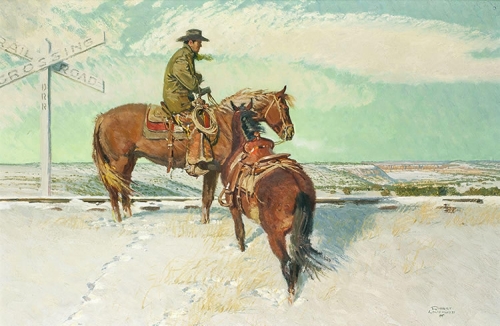Robert Lougheed (1910-1982)
Robert Lougheed, who came to be known as "the painter's painter," was born and raised on a farm in Ontario, Canada. At nineteen, he was a mail-order and newspaper illustrator for the "Toronto Star", studying at night at the Ontario College of Art and then at the Ecole des Beaux-Arts in Montreal. At age twenty-five, he came to New York as the pupil of Frank Vincent DuMond and Dean Cornwell at the famed Art Students League. He continued working for over thirty years as
More
Robert Lougheed, who came to be known as "the painter's painter," was born and raised on a farm in Ontario, Canada. At nineteen, he was a mail-order and newspaper illustrator for the "Toronto Star", studying at night at the Ontario College of Art and then at the Ecole des Beaux-Arts in Montreal. At age twenty-five, he came to New York as the pupil of Frank Vincent DuMond and Dean Cornwell at the famed Art Students League. He continued working for over thirty years as an illustrator and his work appeared in magazines such as "National Geographic", "Sports Afield" and "Reader's Digest" .
He traveled widely throughout the West, particularly the old Bell Ranch country of New Mexico. In 1970, he was commissioned by the Post Office Department to design the six-cent buffalo stamp for the Wildlife Conservation Series. Books he illustrated are "Mustang", with the paintings in the Cowboy Hall of Fame, and "San Domingo". He was a multiple-award winner at both the National Academy of Western Art and the Cowboy Artists of America.
Robert Lougheed was a quiet, forceful man, dedicated to painting. Relative to outdoor painting he said that "the best information is always in front of you", and he lived by this. Years of observation had taught him to work quickly and from nature whenever possible. His enthusiasm was boundless when natural phenomena were under discussion; a favorite comment was "Isn't it wonderful?"
Because of his early years on the farm and years of study devoted to animals and landscape, his knowledge was encyclopedic. This strong background coupled with a fine color sense continued to make him one of the most forceful painters of our time, a true artist's artist. In his ability to select, he saw the best and the most telling of whatever was before him. When his rapid brush struck in sunlight on an adobe wall, to many viewers it was better than the wall itself.
Robert Lougheed's interest in art went far beyond his own easel. He was one of the prime movers in the founding of the National Academy of Art at the National Cowboy Hall of Fame, and continued to serve as an advisor for many years. He also gave generously of his time as a teacher to many young painters who came to him.
As a beneficiary of the legacy of Frank Vincent DuMond, Harold Von Schmidt, Sir Alfred Munning, Frederic Remington and a legion of others, Robert Lougheed felt obliged to help preserve their artistic traditions. He championed realism at a time when the mainstream of American art had lapsed increasingly into abstraction.
Note: Relative to the death date of the artist, the "Lougheed" book written by Bryon Price states on page 118, in the Epilogue, "On June 12, 1982, less than two weeks after Robert Lougheed's death, the National Academy of Western Art paid him a tribute at its annual awards banquet..."
Less
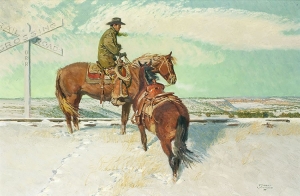 "The Empty Saddle"
20" x 30" oil
SOLD
"The Empty Saddle"
20" x 30" oil
SOLD
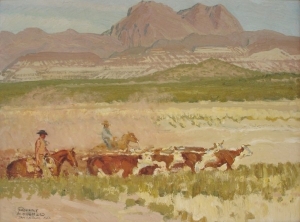 "The Dust of San Carlos"
12" x 16" oil
SOLD
"The Dust of San Carlos"
12" x 16" oil
SOLD
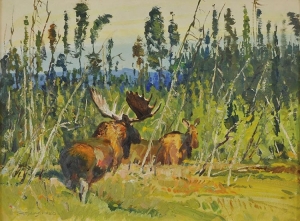 "Alaska Moose"
12" x 16" oil
SOLD
"Alaska Moose"
12" x 16" oil
SOLD
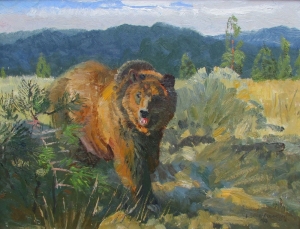 "Grizzly Country"
12" x 16" oil
SOLD
"Grizzly Country"
12" x 16" oil
SOLD
